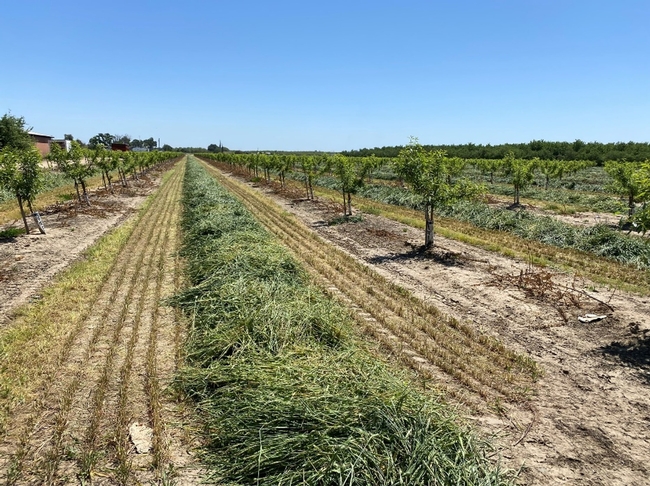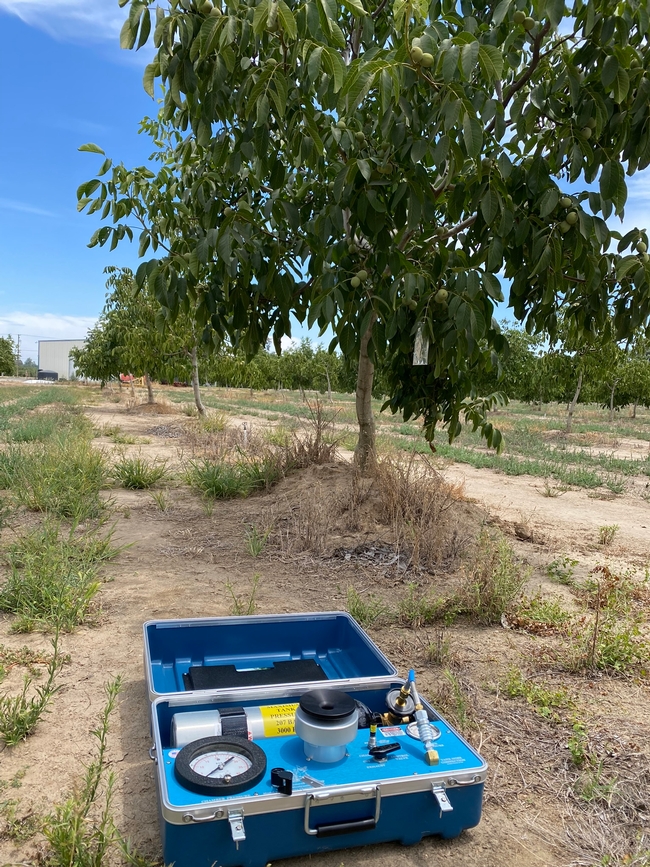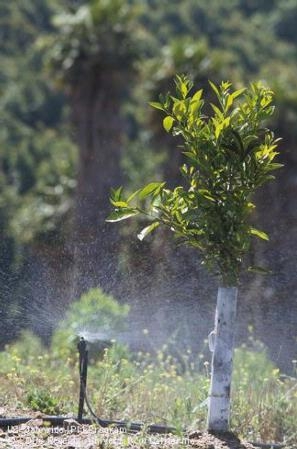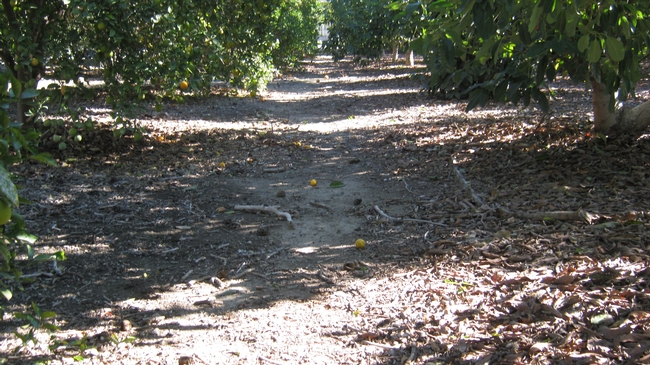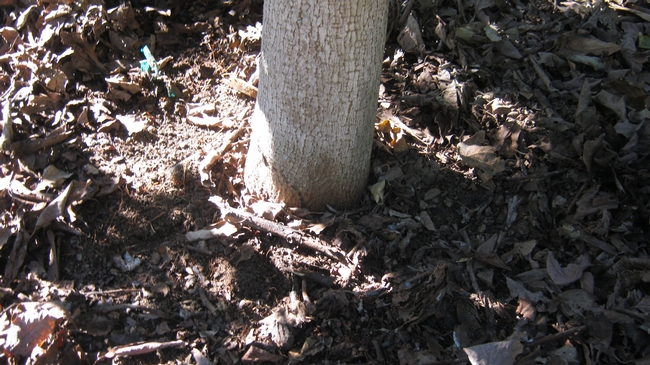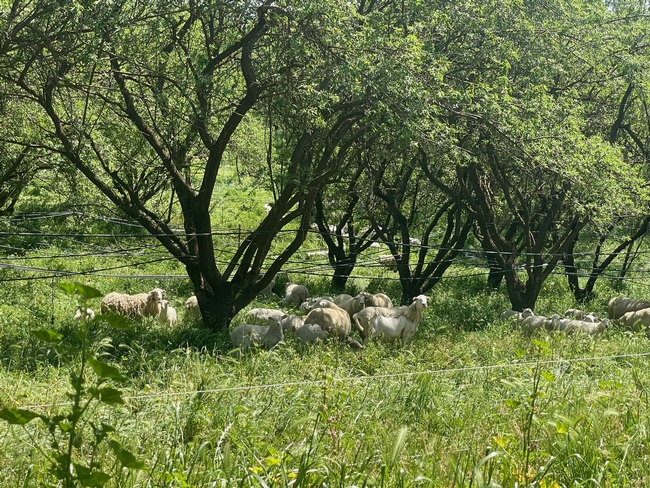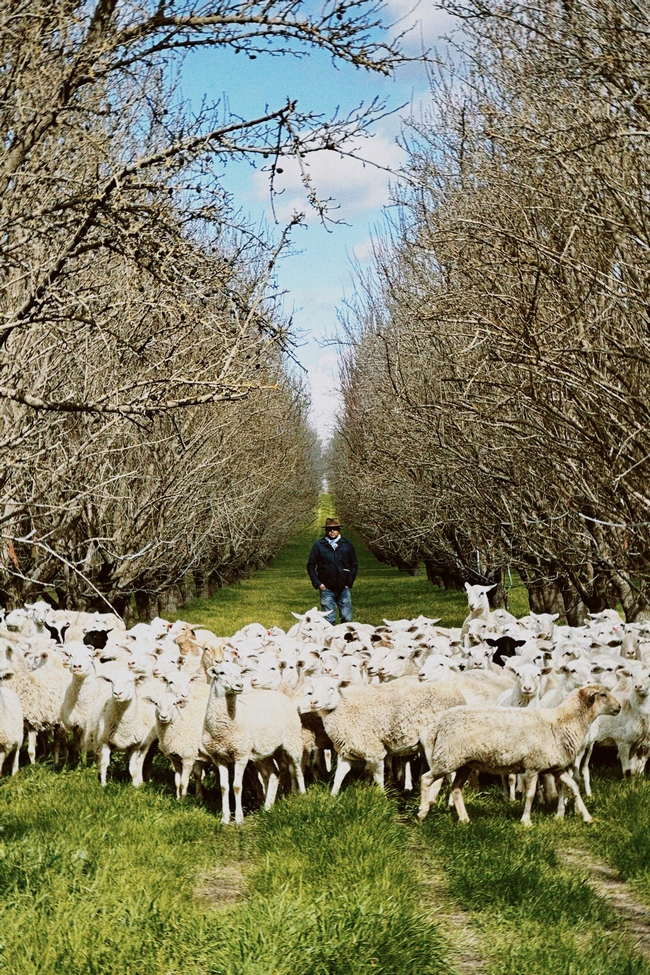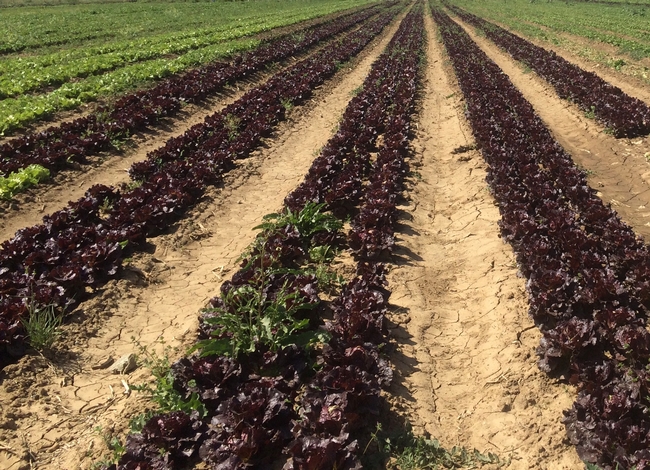Posts Tagged: orchards
Lawn-pocalypse! Surviving Drought
Ah, summer! The season of sunburns, pool parties, and… lawn droughts. If your once lush, green carpet now looks like a crunchy brown doormat, you're not alone. Let's dive into why your yard is staging a dramatic death scene and what you can do to...

Bermuda grass and weeds overtaking drought stressed turf grass.
Weed control during pollinator habitat establishment.
Introduction: Pollinator insects are essential to produce many economically and nutritionally important crops grown in the western USA. These crops include blueberries, almonds, sunflowers, cucurbits, and many others. Almond pollination in California...
Young orchard water and nutrient management workshops offered in Modesto, Merced, Fresno, Bakersfield
Growers invited to discuss young almonds, pistachios, walnuts, olives and citrus orchards starting May 9
To help growers manage irrigation and nutrients for young and immature orchards, UC Cooperative Extension is offering workshops in Modesto, Merced, Fresno and Bakersfield.
The workshops will feature presentations by various experts and researchers focusing on best irrigation and nutrient management practices tailored specifically for young orchards in the San Joaquin Valley. They will cover almonds, pistachios, walnuts, olives and citrus.
“Attendees will gain insights into the irrigation and nutrient needs of young orchards, which are different from those applicable to mature orchards, and learn strategies for adjusting these practices as orchards mature,” said Moneim Mohamed, UC Cooperative Extension irrigation and soils advisor for Stanislaus, San Joaquin and Merced counties. “This knowledge aims to ensure healthier tree development, better resource use and more resilient orchards in the face of climate change.”
Growers, certified crop advisers and other agricultural professionals are encouraged to attend. Workshop attendees may request one-on-one assistance from a UCCE farm advisor.
Speakers include UCCE advisors Mohamed, Mae Culumber, Tobias Oker, and Cameron Zuber, UCCE specialist Giulia Marino, Andre Daccache of UC Davis, Charles Hillyer and Shawn Ashkan of Fresno State.
The Young Orchard Irrigation and Nutrient Management workshops will be held in four locations:
Modesto
May 9 (8 a.m.–12:30 p.m.)
UC Cooperative Extension, Room HI, 3800 Cornucopia Way
Register at https://ucanr.edu/orchardsmodesto
Merced
May 14 (8 a.m.–12:30 p.m.)
UC Cooperative Extension, 2145 Wardrobe Avenue
Register at https://ucanr.edu/orcharsmerced
Fresno
May 22 (8 a.m.–12:30 p.m.)
Fresno State, 5370 N. Chestnut M/S OF 18
Register at https://ucanr.edu/orchardsfresno
Bakersfield
June 5 (8 a.m.–12:30 p.m.)
UC Cooperative Extension, 1031 South Mount Vernon Avenue
Register at https://ucanr.edu/orchardsbakersfield
Workshops are free and include coffee breaks, lunch, workshop materials along with the presentations. Registration is required.
These workshops are supported by a grant from California Department of Food and Agriculture and sponsored by Almond Board of California, California Pistachio Research Board, WiseConn Engineering and Irrometer Company, Inc.
Fire Around Avocados
A great idea from Ed McFadden of Philmore or Fillmore in the local language.
You can always do something to prevent or correct the Big 4 that seem to strike avocados on a regular basis somewhere in California. Avocados in the back country are right up against areas that can burn easily. A fast fire can send embers into an orchard which can burn through the thick leaves in a slow burn. If it gets up against leaves piled up against the trunk, it can girdle the tree, killing it. The slow burn can continue through the orchard torching the irrigation lines. With a small fire break where the leaves are removed in a small alley, the burn can be slowed or stopped.
Leaves are great for erosion control, for nutrient cycling and disease control, but if they mean increasing potential for fire spread, it's a good idea to remove a little of it. Ed has found that a backpack blower can rapidly remove leaves from around the base of trees and create a narrow fire break that can reduce fire damage to trees.
Avocado orchards are notable for their ability to actually reduce fire hazard and slow major fires as has been shown in fires in San Diego, Ventura and Santa Barbara. This is partly due to running sprinklers during wild fire. But tree loss can still occur, especially when electricity goes down and pumps can't run.
Little rain this year or too much rain this year can always pose a hazard to avocado orchards. This sure seems like a good idea to me. And maybe it's time to start thinking about fire season now.
Photos: Cleared alley and trunk.
And another observation from 2008
And orchards being recognized as valuable in a fire prone area by the Santa Barbara Fire Safe Council
Orchards are another fire mitigation strategy, one that has already benefitted Goleta but has played a lesser role for Santa Barbara and Montecito where fewer orchards now exist. More orchards could be planted
The fire burned in the hills until July 28, blackending nearly 10,000 acres but causing relatively little structural damage. Firefighters credited the agricultural barrier of green avocado orchards and irrigated soil surrounding Goleta with saving the town.
But most importantly, how to prepare for fire. Read ON

fire in the distance
USDA awards $2 million to study livestock grazing in organic orchards
UC, The Organic Center, University of Rhode Island partner on $3.5m food-safety study for organic produce growers
Grazing sheep and other livestock can help convert cover crops to fertilizer for orchard crops. To develop best management practices, the University of California and The Organic Center are collaborating on research to help organic orchard growers safely incorporate livestock grazing into their farming practices. The project is funded by a $2 million grant recently awarded through the U.S. Department of Agriculture's Organic Agriculture Research and Extension Initiative research program.
Interest in grazing livestock on cover crops in nut orchards has increased in recent years. However, research is needed to determine the best way to improve soil health and pest suppression, and to address concerns about food-borne pathogens and food safety.
“Organic farmers typically follow the USDA National Organic Program standards for raw animal manure, waiting 90 to 120 days between incorporating raw manure into the soil and harvesting the crop,” said Alda Pires, UC Cooperative Extension urban agriculture and food safety specialist in the School of Veterinary Medicine at UC Davis.
“Little research has been conducted to verify adequate waiting periods to reduce contamination risks in integrated crop-livestock production systems,” she said. “This research will fill the knowledge gap and facilitate the development of science-based food safety guidelines for grazing small ruminants in orchards.”
For this four-year project, “Influence of Orchard Grazing on Soil Health and Pest Control While Mitigating Food Safety Risk,” the scientists will study organic almond, walnut and pistachio orchards in two distinct nut-growing regions in California – the Sacramento Valley and San Joaquin Valley. The scientists will assess the effects of livestock grazing of cover crops on bacteria populations, soil health, pest control and economics.
Building soil health
“Growers have consistently raised the need for more information on grazing impacts on nutrient availability during tree growth, as well as potential to build up the biological, physical and chemical pillars of soil health,” said Amelie Gaudin, associate professor and endowed chair of agroecology in the UC Davis Department of Plant Sciences.
Livestock grazing may provide an opportunity to quickly enhance the amount of nitrogen that can be used by plants and microbes when the cover crop is terminated. “This project will help growers develop nitrogen budgets for these more diversified systems and quantify additional benefits and potential tradeoffs for soil health – such as compaction and salinity – to guide the development of place-based best management practices,” Gaudin said.
Pest management
Houston Wilson, UC Cooperative Extension specialist in the Department of Entomology at UC Riverside, will be studying the effects of livestock grazing on orchard pests.
“Navel orangeworm, or NOW, is by far the most destructive pest of almonds and pistachios,” Wilson said. “These moths overwinter in unharvested nuts in the orchard, and so removal and destruction of remnant nuts over the winter is the foundation of NOW control. While farmers typically use machinery to do this, grazing with animals may present a unique alternative that is more cost-effective and provides additional ecosystem benefits, such as soil health and weed control.”
Outreach to farmers
As part of the project, The Organic Center was awarded $75,000 to work with UC Agriculture and Natural Resources to direct national extension and education outreach activities. These will include a social media campaign, webinars and educational sessions and a technical report for growers.
“There is an increasing interest from organic farmers to learn how to incorporate livestock into their operations to gain better soil health and fertility,” said Amber Sciligo, director of science programs at The Organic Center.
“This research is very exciting because it will holistically explore the potential risks and benefits of livestock not just to soil health, but also pest control – a truly interdisciplinary project that matches the whole system of the organic farm.”
Produce food-safety management tools
For another organic food-safety project, Pires and Sciligo will be working with Patrick Baur, professor of Sustainable Agriculture and Food Systems at the University of Rhode Island.
The University of Rhode Island and The Organic Center received $3.5 million from USDA's Organic Agriculture Research and Extension Initiative research program for the new organic food-safety education project.
“We're going to develop a new food safety management tool designed specifically for organic soil amendments,” said Baur, who is leading the project. “We're also going to develop a suite of new communication and training tools aimed at the entire fruit and vegetable sector to build a shared language between organic agriculture and the food safety community and help them work better together.”
As part of the produce project, Pires of UC Davis was awarded $1.16 million to conduct a risk assessment and create a publicly accessible dashboard to meet the specific needs of organic growers operating at different scales, under different cropping systems, in different regions.
Also participating in this project will be Beatriz Martinez Lopez, professor in the School of Veterinary Medicine at UC Davis, and Abhinav Mishra and Govindaraj Dev Kumar of the University of Georgia.

